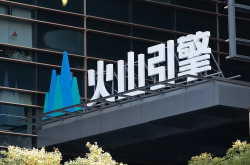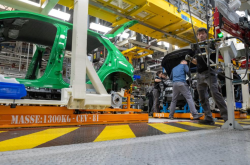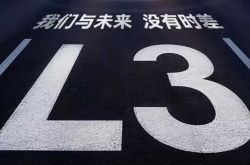Huawei Unveils First Native HarmonyOS Phone, Stirring Public Debate
![]() 03/21 2025
03/21 2025
![]() 651
651
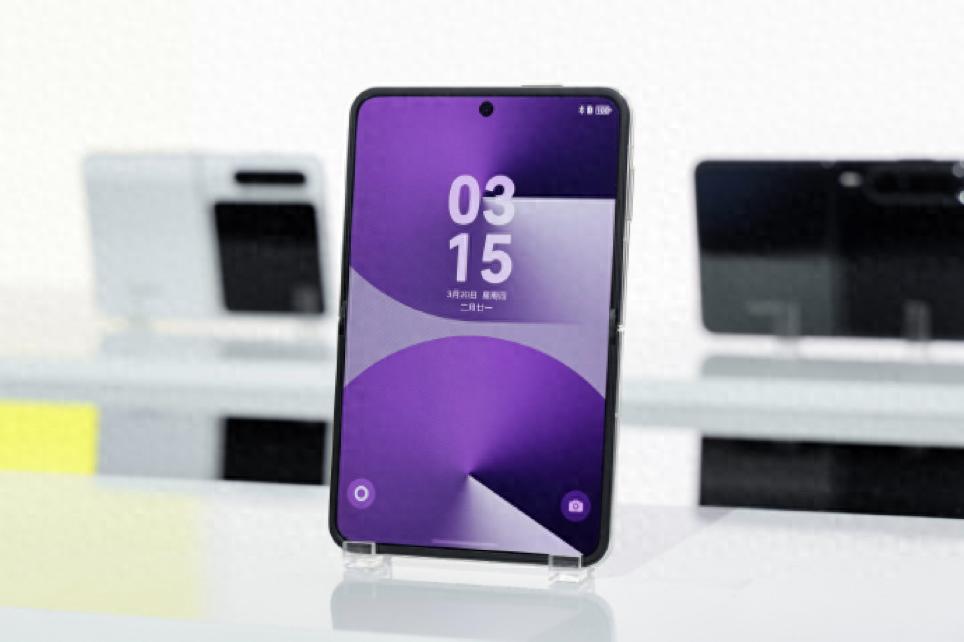
The controversy isn't rooted in the 7499 yuan pricing but rather in Yu Chengdong's prior marketing strategies.
On March 20th, Huawei introduced the compact foldable phone Pura X, priced from 7499 yuan, sparking widespread debate. This uproar traces back to remarks made by Huawei's Terminal Chairman Yu Chengdong, who had previously hinted at the release of a "nationally affordable" phone in March.
However, the mismatch between expectations and reality has triggered a wave of criticism directed at Yu Chengdong on social media.
01
Yu Chengdong's comments have garnered significant backlash from netizens
While the Huawei Pura X boasts certain innovative product designs, its price tag of 7499 yuan aligns with that of last year's Pocket3, another compact foldable phone launched by Huawei at the same time.
Price and product weren't the primary points of contention; rather, it was Yu Chengdong's marketing approach that stirred the pot.
During a live broadcast for the Enjoyee S9 in January, Yu Chengdong, known for his outspoken nature, couldn't resist revealing that an unexpected product would be unveiled in March. "I believe once this product hits the market, it will be a rush. This year, I aim to create a product that everyone in the country can afford and will eagerly purchase."
In context, Yu Chengdong was likely comparing it to Huawei's tri-fold phone MateXT, priced at just over 20,000 yuan. The 7499 yuan "wide-fold" variant is indeed more affordable. Nevertheless, the phrase "affordable to everyone in the country" struck a nerve with the public.
When many users anticipated a relatively budget-friendly price, they discovered that the product offered only incremental form factor innovations and wasn't as affordable as they had hoped. Its retail price stands at 7499 yuan, with the collector's edition peaking at 9999 yuan.
It's worth noting that mainstream mobile phone prices in China generally hover around 3000-4000 yuan. Reports from Counterpoint Research and IDC indicate that the average smartphone price in China is expected to surpass the 4000 yuan mark in 2025. Nonetheless, 7499 yuan is still significantly higher than the average.
Precisely because of these remarks, users harbored excessively high expectations. Yu Chengdong's social media accounts have been flooded with dissatisfied comments, prompting him to enable a feature that restricts comments to fans only on his Douyin account.
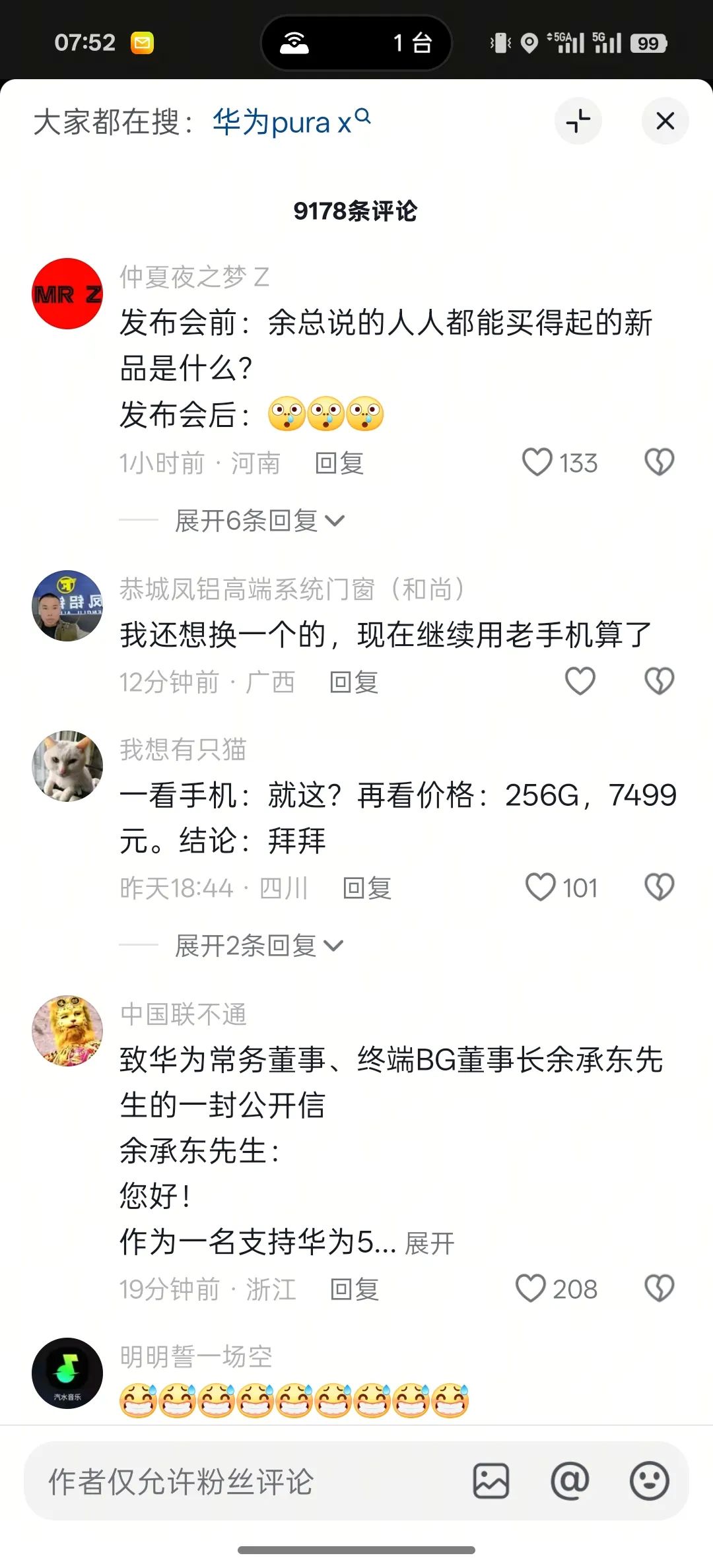
Comments such as "Yu Chengdong is out of touch with the masses," "Buying on installments is just over 600 yuan per month; indeed affordable to everyone," and "The so-called affordable to everyone is just empty talk for ordinary wage earners" abounded.
As the long-time operator of Huawei's terminal business, Yu Chengdong's outspoken image is deeply ingrained. While some of his radical statements have been fulfilled, there hasn't been much external backlash. However, this time, the gap between expectations and reality, coupled with socio-economic factors, has led to widespread disapproval among netizens.
02
The new folding form factor presents significant challenges
The Pura X's form factor has also garnered significant attention. In today's transparent mobile phone market, Pura X maintained a veil of mystery up until its unveiling.
For instance, many netizens speculated that the "unexpected new product" mentioned by Yu Chengdong would be a rollable screen. Even during the pre-launch hype, it was widely believed to be a cloud phone. A cloud phone is a device where basic tasks are processed locally, while more demanding tasks are offloaded to the cloud. By integrating terminal and cloud capabilities, it can reduce the phone's configuration and price while leveraging cloud benefits.
However, despite their theoretical appeal, cloud phones are not mainstream. For example, access speed heavily relies on network conditions, and compared to local processing, cloud processing speed may not meet users' immediate needs. Currently, cloud terminals are more prevalent in PC office environments.
When Huawei unveiled the PuraX, it sparked considerable discussion. Although it continues Huawei's line of compact foldable Pocket series phones, Huawei has adopted a 16:10 widescreen design for the first time, featuring a 6.3-inch internal screen (2120×1320 resolution) and a 3.5-inch external screen when unfolded.
Notably, the external screen size of Huawei Pocket 2 is 6.94 inches. Since PuraX uses a 16:10 screen design, it appears shorter but wider, offering a tablet-like experience when unfolded. The last time this screen ratio was used was on Meizu's MX2.
At the launch event, Huawei demonstrated typical usage scenarios for this new screen size, such as reading and video experiences. Compared to a 16:9 screen, Huawei Pura X can display more text and offer a wider field of view. Additionally, Huawei Pura X introduces the AI eye-tracking page-turning function, allowing users to automatically turn pages when reading e-books without touching the screen by simply moving their eyes to the end of the page, enhancing the digital reading experience.
Moreover, this phone is the first to be equipped with the new AI assistant XiaoYi, deeply integrated with the Pangu large model and the currently popular DeepSeek. It can recognize over 100 real-world scenarios, support 11 types of emotion perception, and can be "naturally interrupted" to insert new instructions during a conversation, making interactions more flexible and natural.
Yu Chengdong also revealed that the HarmonyOS ecosystem is in its final sprint phase and will launch HarmonyOS PCs in May.
Compared to Huawei's widely acclaimed tri-fold phones, the wide-fold design has received mixed reviews. For example, some netizens joked that this phone "combines the inconvenience of a large, hard-to-hold screen with the limitations of a small screen and small battery." Additionally, the current mainstream screen size is 16:9, meaning Huawei not only needs to customize the screen but also adapt applications accordingly.
Judging from capital market feedback, Huawei's new form factor phone isn't viewed optimistically. On March 20th, following the launch of Huawei Pura X, the share price of Visionox, Huawei's screen supplier, approached the daily limit down, and Furi Electronics, Huawei's component supplier and contract manufacturer, also saw a sharp decline at the end of trading.
03
Suggestions from netizens
Many netizens express regret over Huawei PuraX's marketing misstep. Since Huawei's mobile phone comeback in recent years, the company has enjoyed rapid growth and maintained a high market share in the foldable category.
Many netizens mentioned that Huawei's product itself isn't flawed, and past pricing has been consistent. The product's value shouldn't be negated due to Yu Chengdong's earlier careless remark.
Therefore, some netizens suggested that Yu Chengdong should learn from Lei Jun. Before the launch of Xiaomi SU7 Ultra, Lei Jun consistently gave the impression that the model would cost around 800,000 yuan, suggesting it would be "a bit expensive." However, when the price was announced at just over 500,000 yuan, it felt like a bargain. Lei Jun excels at this approach. While the pricing may have been decided from the outset, he always hints early on that the product will be expensive, artificially creating "surprises".
Some netizens also proposed that as the first model fully running native HarmonyOS, which is still in its nascent stage with an incomplete ecosystem and applications, Huawei should release a more affordable phone to drive HarmonyOS application adoption through higher sales.
Reviewing Huawei's mobile phone launches over the past few years, a clear pattern emerges. Amidst severe mobile phone homogenization, Huawei hasn't followed the herd but has actively innovated in phone form factors. For instance, the telescopic camera design of Pura70 Pro and the tri-fold design of MateXT have always captured attention and been highly recognizable in the market upon launch.
Perhaps for Huawei, which has firmly established itself in the high-end market against the backdrop of stagnant overall mobile phone sales for years, it hopes to meet personalized demands through innovative form factors. However, some of Huawei's marketing actions easily divert users' focus from the product itself to off-topic controversies.

